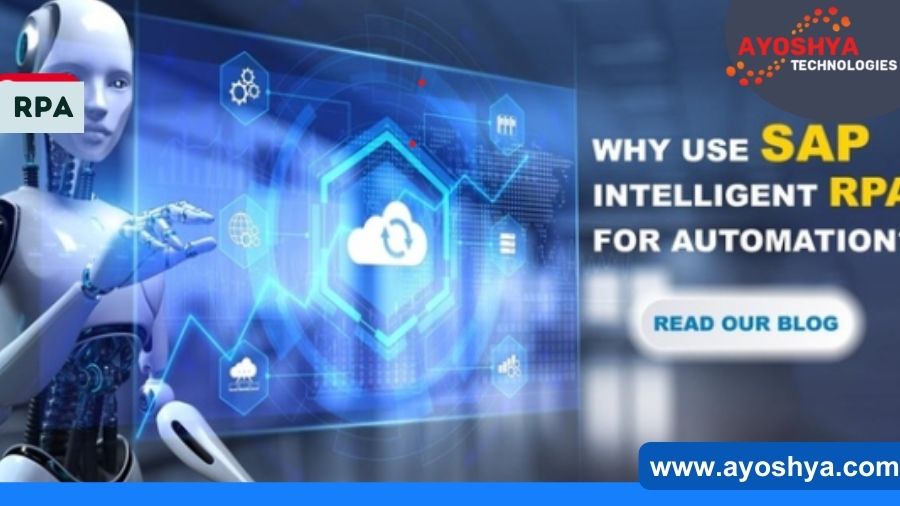Which RPA Tool is Best for SAP Automation? A Journey 2024 ..
Discover how Alex, a fictional automation specialist, finds the perfect RPA tool for SAP automation. Learn about the leading RPA tools and how they transformed Alex’s work environment, boosting efficiency and accuracy in SAP processes.
In the ever-evolving world of business technology, Robotic Process Automation (RPA) has emerged as a game-changer, particularly in the realm of SAP automation. Among the myriad of RPA tools available today, choosing the right one can seem like a daunting task. To illuminate this journey, let’s delve into the story of Alex Carter, a fictional automation specialist whose quest to find the best RPA tool for SAP automation transformed his work and his career.
The Challenge: Finding the Ideal RPA Tool
Alex Carter had always been at the forefront of technological innovation. As an automation specialist at TechNex Solutions, he was tasked with optimizing SAP processes to improve efficiency and reduce manual errors. However, despite his expertise, Alex faced a significant challenge: identifying the most effective RPA tool for SAP automation from a crowded market.
SAP systems, with their complex and multifaceted processes, demand a tool that can seamlessly integrate and manage workflows without disrupting existing operations. Alex knew that the right RPA tool could make a world of difference, but he was unsure where to start.
Exploring the Options
Alex began his search by evaluating several leading RPA tools renowned for their capabilities in SAP automation. His goal was to assess which tool could deliver the best performance, reliability, and ease of integration. He started with the following candidates:
- UiPath: Known for its user-friendly interface and extensive automation capabilities, UiPath is often praised for its ease of use and robust features. Alex was intrigued by its drag-and-drop functionality and the support it offered for SAP applications.
- Automation Anywhere: This tool stood out for its advanced cognitive automation features and scalability. Automation Anywhere’s focus on enterprise-grade solutions caught Alex’s attention, particularly its ability to handle large-scale SAP implementations.
- Blue Prism: Blue Prism’s reputation for stability and security made it a strong contender. Alex was impressed by its enterprise-grade security protocols and the seamless integration it promised with SAP systems.
- Kofax: Known for its document automation capabilities, Kofax intrigued Alex with its ability to process and manage SAP-related documents efficiently. Its integration with SAP and other systems seemed promising.
The Journey of Discovery
Determined to make an informed decision, Alex embarked on a comprehensive evaluation process. He conducted in-depth research, reached out to industry peers, and participated in webinars hosted by the RPA tool vendors. Each tool offered unique features and benefits, but Alex needed to understand which one would align best with TechNex Solutions’ needs.
During this period, Alex also engaged in several pilot projects. He implemented each RPA tool in small-scale SAP automation scenarios to gauge their performance. This hands-on experience provided valuable insights into the practical aspects of each tool.
The Turning Point
The pivotal moment came when Alex compared the performance metrics from his pilot projects. He noticed distinct differences in how each tool handled SAP workflows, from process automation to error handling. One tool, in particular, stood out: UiPath.
UiPath’s intuitive interface and seamless integration with SAP proved to be game-changers. Alex was able to quickly design and deploy automation workflows without extensive coding. Furthermore, UiPath’s robust support for SAP applications and its ability to scale with TechNex Solutions’ growing needs made it the ideal choice.
The Implementation
With UiPath selected as the preferred RPA tool, Alex led the implementation project with enthusiasm. He collaborated closely with his team to design and deploy automation workflows tailored to TechNex Solutions’ SAP processes. The transition was smooth, thanks to UiPath’s user-friendly design and comprehensive support resources.
The results were remarkable. The automation of repetitive SAP tasks significantly reduced manual errors and increased overall efficiency. Alex observed a substantial decrease in processing time and an improvement in data accuracy. The successful implementation not only optimized SAP processes but also reinforced Alex’s belief in the transformative power of the right RPA tool.
The Lessons Learned
Reflecting on his journey, Alex recognized several key lessons that could benefit others in similar situations:
- Thorough Evaluation is Crucial: Investing time in researching and piloting different RPA tools is essential. Each tool offers distinct features, and understanding how they align with your specific needs can make a significant difference.
- Integration and Scalability Matter: When selecting an RPA tool for SAP automation, consider its ability to integrate seamlessly with your existing systems and scale with your organization’s growth.
- User Experience is Key: A tool with an intuitive interface and strong support can greatly enhance the implementation process and ensure successful automation outcomes.
- Focus on Results: Ultimately, the effectiveness of an RPA tool is measured by the results it delivers. Look for a tool that consistently improves efficiency, accuracy, and overall performance.
Conclusion
Alex Carter’s journey to find the best RPA tool for SAP automation underscores the importance of careful evaluation and strategic decision-making. Through his efforts, he not only found a solution that transformed TechNex Solutions’ SAP processes but also set a benchmark for future automation projects. In a world where technology continues to advance rapidly, Alex’s story serves as an inspiration to professionals seeking to optimize their systems and processes. By choosing the right RPA tool, like UiPath, and implementing it effectively, businesses can unlock new levels of efficiency and accuracy, paving the way for continued success and innovation.
you may be interested in ths blog here:-
Unlocking the Magic of Phonics: The Power of Phonics Songs for Kids
Fueling Your App: Consuming Data with OData Services in SAPUI5




